Coming off his debut solo show, Tel Aviv street artist, Know Hope finds himself in an interesting dichotomy. How will his street art and gallery work coexist? We were lucky to meet this young, emerging artist and ask him a few questions, on and off camera.
Sezio: When did you start leaving your art in the streets?
Know Hope: I think it would be something close to four years ago.
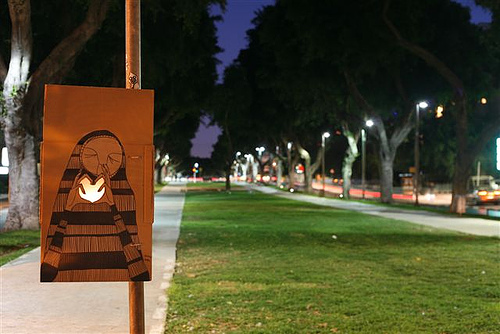
SZ: Have any of your lanterns ever caught fire?
KH: I truly hope not. I think about it every time I go and put a batch out. I try to be as cautious as I can, meaning where I put it and what the weather is like. The light boxes are pretty safe as well, I think that unless someone deliberately tampers with it, it should be fine. I keep my fingers crossed.
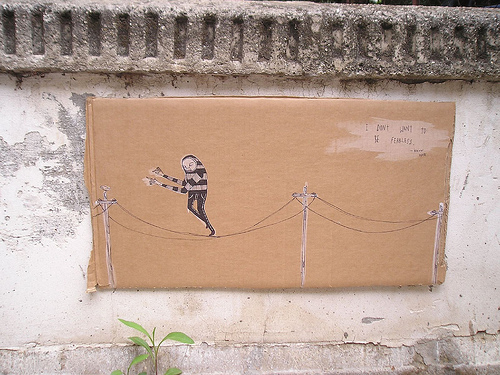
SZ: What is the Library Project?
KH: The library project was basically the way I would perceive most of my street work a little while back. It dealt with the ideas of lending, borrowing and owning and the dialogue between those issues and putting up art in the street. Instead of making sure the pieces were affixated to the walls as strong as possible, I put them up with 8 pieces of double-sided tape- 4 used to apply the piece, and the other 4 that can still be used. On the wall, I wrote 'I let you borrow my heart for a while, let others borrow it as well', then put the piece over it.
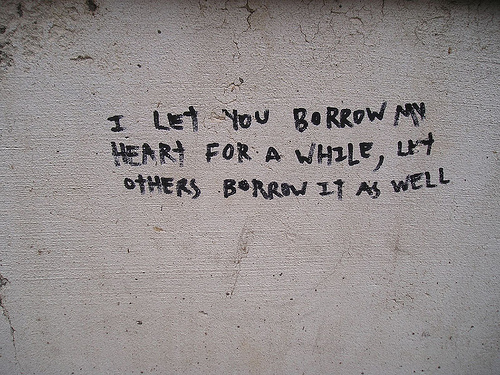
Since my pieces are taken off the streets, I knew it would be seen when the piece was removed. I hoped to raise some sort of dialogue about the complexities of leaving art in the public domain. Once you put it outside, its no longer yours and technically is up for taking. The extra pieces of tape were there in order for the collector to have the possibility to replace the piece or even better place it in another location, becoming a curator in a way. I'd like to think that it doesn’t necessarily point any fingers, but raises a few questions and thought about what it means to own or share, in a place that belongs to everybody.
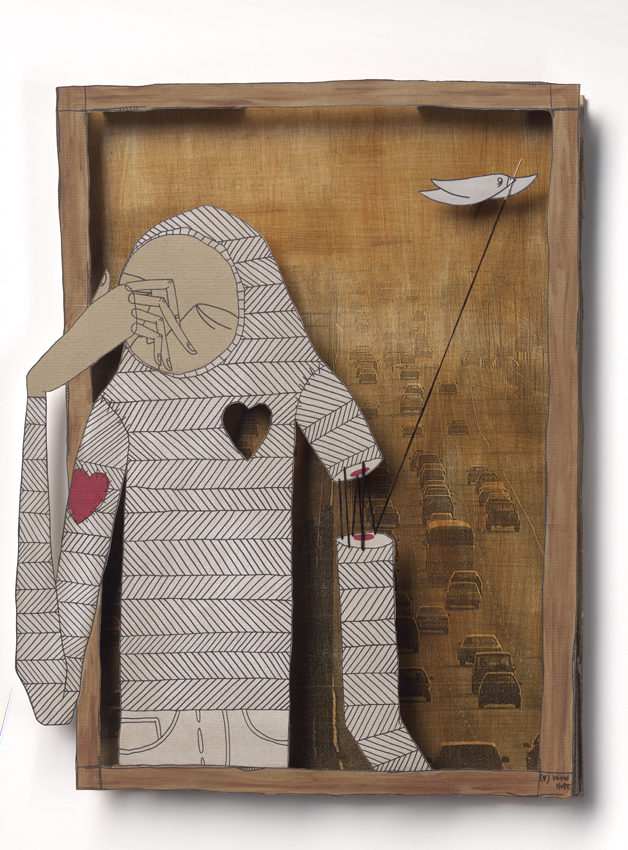
SZ: Have gallery shows changed your approach to art?
KH: I think that it is inevitable for the work in galleries to change my approach to art, just as anything happening around me has some sort of effect on how I perceive my presence and output. Working in a gallery is a completely different mindset, which allows you to create an environment as a whole, whereas in the street you are reacting to an existing one, and becoming part of a collective reality, accessible to all. I know that for me it is definitely interesting, to figure out how to pass on certain ideas or gestures in the different arenas, its kind of like doing some sort of psycho-analysis, to attempt to figure out how to communicate those same ideas and gestures in an environment that has an unpreventable affect on how the viewer perceives them.
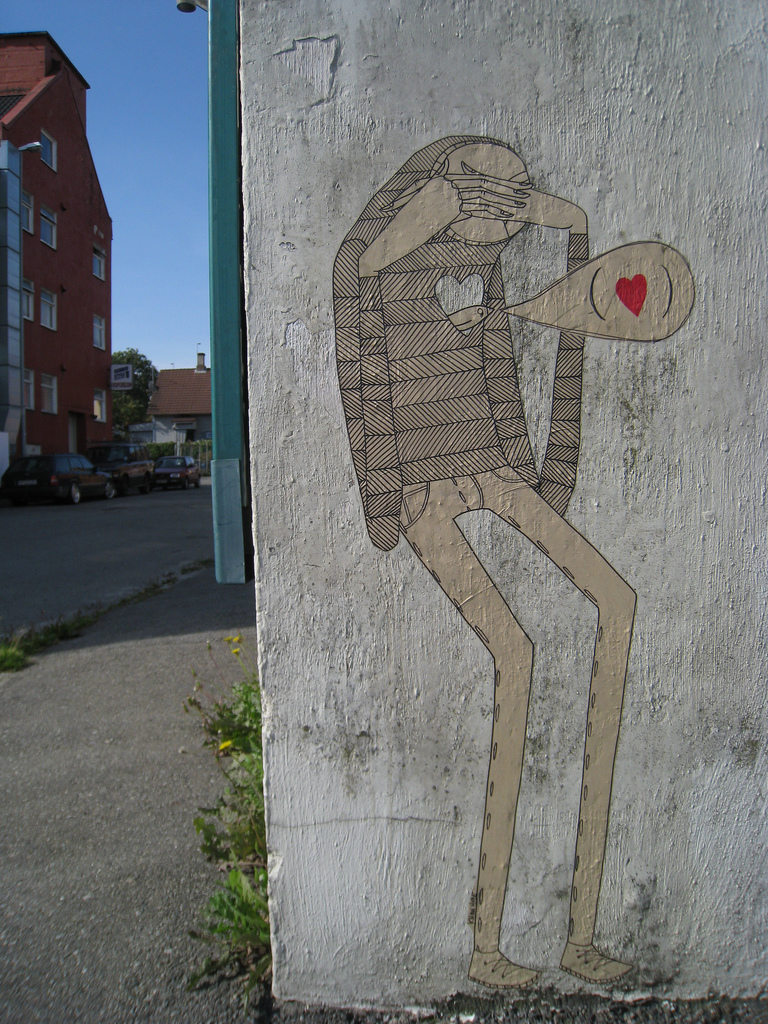
SZ: Is there a life span to your current character?
KH: Since it is the natural course of everything, I think that in a way, yes. It’s going through physical and symbolical metamorphoses and encountering new situations. Making the transition from observer to an active part of the surroundings in which it is juxtaposed. I think that the path on which it is on is definitely linear, and there is some sort of storyline.
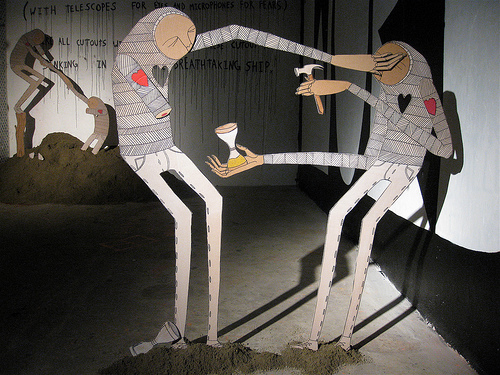
SZ: Is there a message you're trying to spread with your art?
KH: This question is kind of like quicksand for me. The more I'll try to squirm around to find the words, the deeper I'll sink. I’d like to think that my work is some sort of reflection of my surroundings and the general surroundings in the times that we are all in. A certain documentation of the collective human struggle and the minor moments and conditions that compose it. We’re all in it together, and I am attempting to find that common language in which to converse.
.jpg)
Know Hope's "Temporary Residence" can be seen at Anno Domini until November 22nd. During his stay in San Jose, Know Hope left his mark on the outside of the gallery as well. Gallery owner, Cherri Lakey, documented the entire process here.
View Know Hope's website here. or available works from the show here.